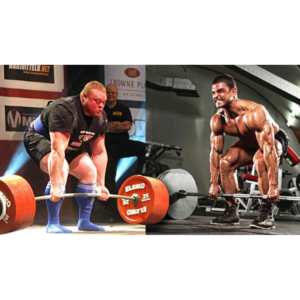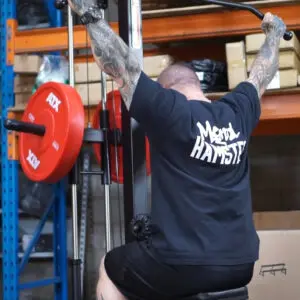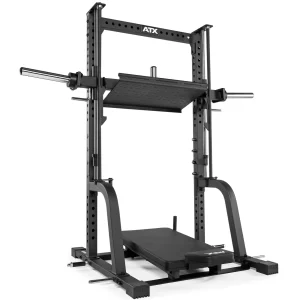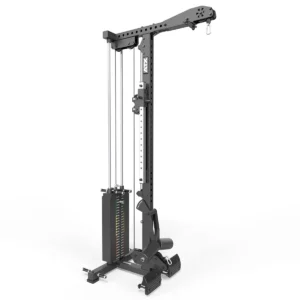 Back Day Exercises
Back Day Exercises
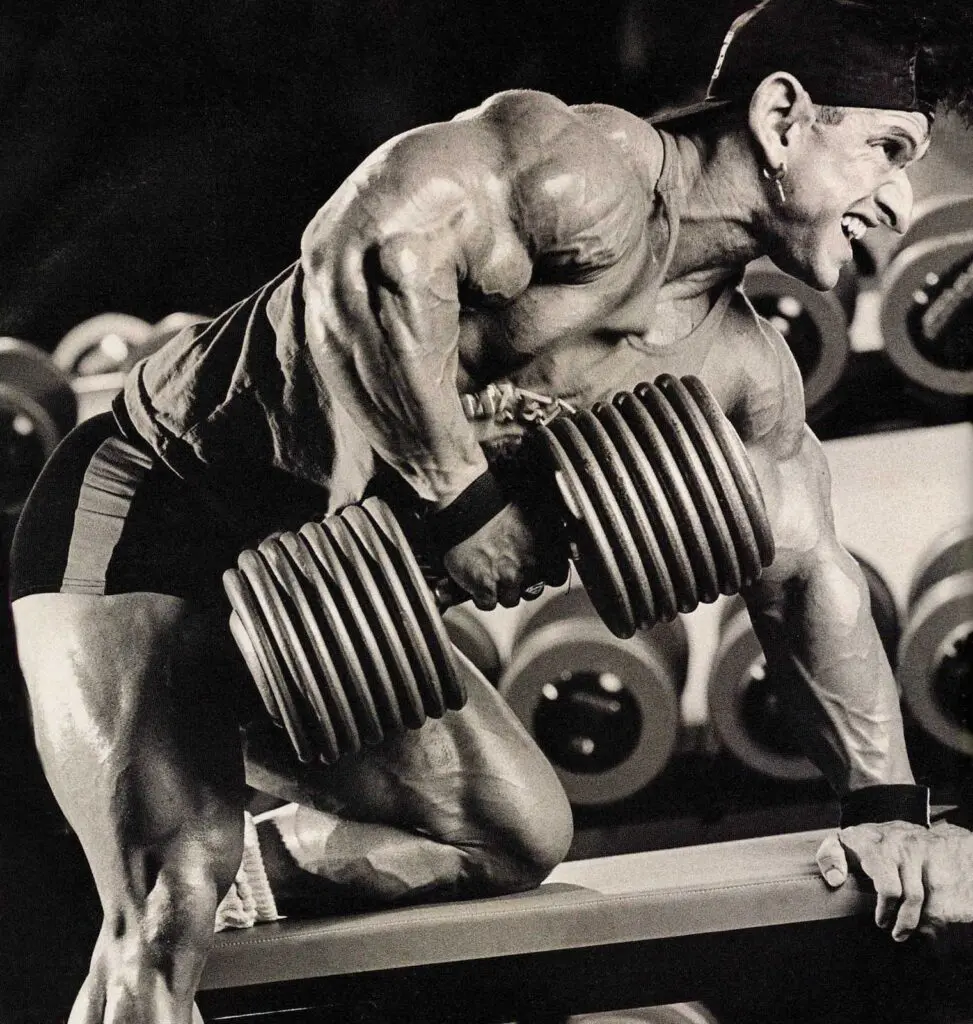
Having a well-developed back is beneficial for you even if you are not planning on competing in bodybuilding competitions. It will improve your posture, reduce back pain, help you lift more weight and improve the stability in other exercises.
Despite all the positives, it is not uncommon for beginner and even advanced athletes to ignore back accessory exercises or skip the back day completely. If you like looking at yourself in the mirror you cannot see the fruits of your labour. There is no visual pay back – out of sight out of mind.
The other advantage of back exercises is that there are so many to choose from with almost endless variations. Not only will they give you great results, but they can also really spice up your training.
Bodyweight Back Exercises
Just because they are simple exercises, does not mean that they are not effective. Everyone seems to be looking for a fancy overcomplicated machine to use in the gym, thinking that it would be their gateway to having a barndoor back.
Do not get me wrong, there is some great back equipment out there. Some machines will work your entire back, other machines are great at isolating specific muscle groups or alleviating the pressure of an injured joint. Despite this, some are not able to provide the same benefits as some of the most basic bodyweight exercises.
It is also worth noting that strength which is built with bodyweight exercises would have a way higher carry over to other exercises compared to just machine training. This is because they recruit a large range of muscle groups.
If you need evidence that bodyweight exercises work just have a look at the physiques of callisthenics enthusiasts and gymnasts. The best thing about bodyweight exercises is that you can do them virtually anywhere. In fact, most public parks and beaches provide the basic chin-up bar and dip bar.
The Godfather of Barn Door Backs – Pull-Ups
Chin-ups are a great and inexpensive way to build a strong back, biceps and improving your grip. If you are just starting out and have not trained before, chances are that you will struggle to complete the chin-up without any assistance.
You can decrease the resistance while learning the correct form by using resistance bands. They would allow you to complete the repetition with correct form while still strengthening your muscles.
Another method of building your chin up when starting out is to start in the top position and lower yourself in a controlled fashion.
There are quite a few different pull up variations which can be performed with just the simple straight chin-up bar. If you find the straight chin-up bar too easy or uncomfortable you can always spice things up, or alleviate wrist or shoulder problems, by opting for the multi-grip chin-up bar. The angled grips would provide better ergonomics allowing you to focus on the exercises rather than trying to find a way to avoid the pain.
How to:
Your exact form will vary based on your grip. If we would take the basic chin up as an example:
– Underhand grip (Chin Up) – this grip puts more stress on your biceps. Grip the bar at the shoulder width, keep your elbows tucked in throughout the whole movement. Try to exercise throughout the whole range of motion (bring yourself all the way up and all the way down)
– Overhand Grip (Pull Up) – This grip is putting more stress on your lats. Grip the bar at the width where your forearm and biceps would form a 90-degree angle at the top of the movement. Naturally, you will try to cheat in this exercise and your body will do its best to activate other muscle groups. Keep your elbows straight, just like your body. For this exercise, you do not have to put your chin over the bar, go up until your arms are at a 90-degree angle.
Pros:
They work a variety of different muscle groups such as your forearms, biceps, shoulders, lats and other smaller yet equally important muscles.
Can be done virtually anywhere: from a chin-up bar in your garage to the bodyweight area in your local park.
Cons:
This is a physically demanding exercise, so your body will try to activate other muscle groups to make it easier for you. Try using a resistance band until you will nail the form and strengthen your back up to a level where you would be able to do them without it.
Inverted Rows
The beauty of inverted rows is that you can do them anywhere, even by using your kitchen table, assuming it is tall enough! This exercise would act as either an accessory exercise to chin-ups or a gateway to strengthening your back up to a level where you could perform a full chin up. There are a few variations of how you could perform this exercise.
If you set up yourself right, you can easily mimic the prone row movement which would target both your upper and middle back.
Suspensions Trainer Inverted Rows
If you own a suspension trainer, there is another exercise you could add to the list:
The suspension trainer rows are very similar to inverted rows. Due to the length of the straps, you can vary the resistance and the angle which would shift the load between the muscles.
How to:
There are a couple of different ways you could perform this exercise.
1. Bend your knees and lower yourself to a 90-degree angle, brace yourself and pull yourself up.
2. Keep your legs and body straight, position yourself so that you would be at around 45-degree angle and pull yourself up.
Always squeeze your muscles at the top of the moment. Breathe out during the harder moment. Once you have finished the set, go for a short walk around your gym. This would help you to bring your heart rate down.
Dumbbell Exercises for Back
Just like bodyweight exercises, engineers designing gym equipment have struggled to match the effectiveness of simple dumbbell exercises for back development.
Dumbbells allow you to vary your hand position which either helps you to target a specific muscle group or alleviates the pressure of a sore joint. Controlling the dumbbell also builds the stabilising muscles around the target muscle group.
These factors make dumbbell training essential for a lot of different sports compared to a barbell or machine training.
Here are some of the most effective dumbbell back exercises that you can add to your workout:
One-arm Row
This is a great exercise if you want to add some more size to your lat. As a bonus, it also is a killer grip workout too.
How to:
– Choose a lighter dumbbell for this exercise until you learn the proper form.
– If you are starting with your right hand, place your left knee and left hand on the flat bench. You can also support yourself on a dumbbell rack or something else that is a similar height.
– Try to keep your shoulders in a horizontal position.
– Bring the dumbbell forward and row in back in a semi-circular motion. Your elbow should stick out past your back by only a few centimetres.
– Squeeze the muscle at the top of the movement.
– On your way back down, bring the dumbbell forward in a semi-circular motion. Try to avoid swinging.
Wide Chest Supported Row
The mechanics of this exercise are very similar to your T-Bar row or the Prone Row. By performing this exercise with dumbbells, you will gain an additional range of motion.
How to:
– Set your bench up at around 35-45-degree angle. Choose a lighter pair of dumbbells until you will learn the correct form.
– Keep your body in a straight line, your head should stick past the back-rest pad.
– Like the one-arm-row, bring the dumbbells forward and row them back in a semi-circular motion.
– Squeeze the muscle at the top of the movement.
– Bring the dumbbells forward in a semi-circular motion.
– Breathe out during the harder moment.
Bent-Over Dual-Arm Dumbbell Row
This is an excellent back exercise for those who do not have a bench or experience lower back problems. You will not be able to move as much weight when compared to a one-arm dumbbell row – when you lean on the bench you can brace your body and therefore apply more force. This does not mean the exercise is less effective. The opposite is true, it will activate different muscles when you do not have the added support. This exercise will target your whole back.
How to:
– Always keep your back straight, lean forward to around 45-degree angle and bend your knees just a fraction.
– Choose the most comfortable grip (neutral or overhand).
– Tense your core and row both dumbbells back in a semi-circular motion.
– Keep your body locked into the position to prevent swinging.
– Squeeze the muscle at the top of the movement.
– Bring the dumbbells forward.
– Always breathe out when you are lifting the dumbbells.
Reverse Dumbbell Fly
The main muscle group being trained with this exercise is your posterior deltoid. This small, but often overlooked muscle plays a vital role in shoulder stability.
There are several ways that you can perform reverse dumbbell flys, depending on what gym equipment that you have at your disposal and what feels most comfortable. By comfortable, I do not mean what is the easiest, but rather what best suits your biomechanics.
Sometimes when an exercise feels particularly taxing it is not because it is bad for you, but rather you do not have the necessary strength and/or muscle balance to perform it properly.
This point is noteworthy when discussing back training as many people complain about sore backs so, therefore, avoid training it. Often the reason their back is sore is that they do not have the necessary back strength required for basic physical activity.
Variations:
Bent Over – the most technical one out of all three. You would need to lock your body into place, tense your core and focus on the perfect execution of the exercise.
Sitting Down – great variation if you do not have a bench and might have lower back pain. Also, by sitting down you would not be able to use the momentum to swing the dumbbells.
Incline Bench – Laying down on the incline bench would provide you with the best method to isolate the posterior deltoid as you would not be able to use the momentum to cheat. It is also a great way to learn the exercise as there is one less thing to concentrate on – you do not need to adjust your body position.
How to:
– Choose the most comfortable variation with your available equipment.
This exercise is performed with light dumbbells. Using heavier dumbbells will recruit other muscles and they will become the dominant muscle in the list as the posterior deltoid is relatively small.
– Start in neutral grip position.
– Raise the dumbbells to the sides while keeping your arms slightly bent.
– Squeeze the muscle at the top of the movement.
– Bring the dumbbells down to the starting positions.
Barbell
If your goal is to build raw strength and muscle mass, barbell training has built many impressive barn doors over the years. A lot of old-timers would use the same barbell for both their compound lifts and back accessory work – that is all they had!
In the perfect world, you would supplement the barbell training with cable machines and dumbbells. If you check out a famous bodybuilder’s back workout in a magazine you could even be forgiven for thinking they were essential.
Do not despair if the only weapon you have is a barbell. Long before there were magazines with bodybuilders there were backs being forged with the barbell alone, backs that would be the envy of those playing around in the machine area of your local gym.
Bent Over Rows
While we are talking about old-timers, it is safe to say that there were not many workouts – whether they be for powerlifters or bodybuilders – that did not include this exercise. Due to the lack of gym equipment, most of which were not even thought of, they built their strength from squats, deadlifts and bench press.
To lift more on these lifts, you needed a strong back. Bent over rows was not only the easiest way to do this with just basic gym equipment, it turns out after decades of training to be one of the most effective.
This exercise might look simple enough, but here are some things that those who are new to the game should be wary of:
– This exercise should not look like a prone row without the bench. Keep your knees bent, your back straight and at 45-degree angle. This way you will preserve your lower back.
– Do not throw weight around, it is easy to overload the barbell and then use the momentum to complete the repetition. You will achieve the best results if the whole movement is being controlled.
How to:
– Keep your back straight (not vertical, do not round it) and bend your knees a little.
– For this exercise, you can use both underhand and overhand grips.
– Pick the barbell at your shoulder width. Your back should be at around 45-degree angle.
– Tense your core and pull the barbell up towards your stomach.
– Bring the barbell down to the starting position in a semi-circular motion.
Prone Rows
This exercise is very similar to the bent-over dual-arm dumbbell row discussed above. It targets the same muscle groups but gives you more control compared to the dumbbell version – the barbell is easier to stabilise compared to dumbbells, but you sacrifice some range of motion.
This exercise, and demand for specialist equipment to perform it, has grown along with the popularity of powerlifting. It is recognised as an exercise that can improve your bench press as it works for the opposing muscle groups. That is, it is like doing the bench press in reverse.
You will need a prone row rack or an elevated flat bench to perform this exercise.
How to:
There are two ways you can perform this exercise; both depend on your grip.
Underhand:
– Grab the barbell at the shoulder width.
– Bring the bar up in a semi-circular motion towards your stomach.
– Squeeze the muscle at the top of the movement.
– Bring the barbell forwards into the starting position in a semi-circular motion.
Overhand:
– Grab the barbell at a width where your biceps and forearm would form a 90-degree angle at the top of the movement.
– Bring the barbell up in a straight line towards your chest.
– Keep your elbows flared out
– Squeeze the muscle at the top of the movement.
Shrugs
Barbell shrugs are one of those exercises where it is easy to let your ego take over. I am pretty sure if you have gone to a commercial gym, you have seen people loading up the barbell with loads of weight and then dipping their neck. All in the hope of stimulating the growth of their traps plus getting more likes on Instagram.
As impressive as it may look, it is a recipe for an injury, and it does very little to help muscle growth. Posting it online may bring you fame via a gym fail compilation.
How to:
– Choose a light weight to start off the exercise.
– Grip the barbell shoulder-width apart.
– Bring your shoulders back and all the way up.
– Squeeze the muscle at the top of the movement for a couple of seconds.
– Bring your shoulders down in a straight line
Seated Good Mornings
Seated good morning is one of my favourite exercises for strengthening my posterior chain muscles and especially the lower back. What makes it even better is that this exercise does not need any special equipment, just a bench or a box and barbell!
How to:
– I would recommend choosing a lighter weight for this exercise until you will nail the form.
– Ideally, you would perform this exercise in a power cage, just so you could rack and unrack the barbell with ease.
– Place the barbell on your shoulders just like you would in a squat set up.
– Sit down on the bench or a box, with your knees in front of you so that the bend would come from your hips.
– Keep your spine straight throughout the whole movement.
– Breathe in, brace yourself and bent forwards until you will feel the stretch in your hamstrings.
– Do not look up as this may strain your neck.
– You can go bit deeper with each repetition, always maintain your spine straight.
– When returning to the starting position, squeeze your glutes.
From my own experience, you will get far better results from this exercise using less weight rather than more. By this I mean if you cannot handle the weight with a textbook form you are missing out. By controlling and stabilising the weight you are activating muscles that are not being used in heavier exercises like deadlifts and dumbbell rows.
Lat Pulldown Machine
There are a lot of different lat pulldown variations which you can perform which just a single pulldown bar, but I will only cover the most common one as I think that this exercise deserves a whole article by itself.
How to:
– Grip the attachment at a comfortable width
– Make sure that you have enough range of motion to extend your arms fully on your lat machine.
– On your way down keep your elbows in the same line as your body.
– Pull the bar down to your chest and slowly lift it back up again until you extend your arms fully.
– Do not use your own body weight to complete the rep, if you feel like you are bending and twisting while trying to complete the rep, lower the weight.
– Always breathe out during the harder moment.
Great exercise for strengthening your back, especially if you are having troubles doing chin-ups with a proper form. Multiple variations can be performed which would shift focus between different muscles.
Face Pulls
Fantastic exercise for strengthening your upper middle back and helping your posture. If you like to bench press you will need a strong upper middle back.
A lot of back and neck pain is the result of weak muscles in this area. This is common amongst office workers and online keyboard warriors as their arms are resting on desks – whether they are typing out reports or owning noobs online.
How to:
– If you don’t have a longer triceps rope, you can use two triceps ropes so you would be able to get the peak contraction.
– Choose a lighter weight, if you go too heavy, other larger muscle groups will take over.
– Take a step back, extend your arms fully and brace your core.
– Pull the grips towards you so that your upper arm is parallel to the floor.
– Squeeze at the top of the movement.
Pros: Great way to strengthen your upper middle back and improve your posture.
Cons: easy to go to heavy and activate other, larger muscle groups.
Seated Cable Rows
If you want to strengthen your back, forearms and even biceps, this exercise should be mandatory in your training regime.
How to:
– Keep your back straight through the entire range. Do not lean back or start rocking back and forth in order to complete the repetition.
– Tense your core and bring the handle towards your lower abdomen.
– Squeeze your shoulder blades together for a second at the top of the movement.
– Return the cable row handle forward under tension for a full stretch.
– Breathe out during the pulling movement.
Pros: Great way to strengthen your back and grip
Cons: People tend to choose a weight which is too heavy and use momentum to complete the repetition.
Straight Arm Lat Pulldown
This exercise allows you to really focus on your lats. By keeping your arms straight you are preventing your biceps and mid-back from taking over. It is one of those exercises that are not commonly used, or when it is used it is not performed correctly.
This is another exercise where you need to forget about what weight you are lifting. The second the weight is too heavy for you is when you start wasting your time. You will need to really focus on performing the lift with the lats. A great exercise to use warming up, or at the end of your back workout.
How to:
– This exercise can be performed either standing or kneeling.
– Choose a light weight for this exercise.
– The movement is very similar to the dumbbell pullover, so the focus should be on the range of motion and not the weight lifted.
– Grab the bar shoulder-width apart.
– Bend your knees slightly and tense your core.
– Bring the barbell down while keeping your elbows slightly flexed.
– Bring the barbell down to the starting position slowly.
Bent-Over Cable Rows
Just like the bent-over barbell row, this exercise is quite heavy on your lower back, so be cautious when performing it. Personally, I like the feel of the cable version. I find it less taxing on your body as the weight is pulling your forwards, forcing you to tense your core.
How to:
– Grab a triceps rope or lat pulldown bar and grip it at shoulder width.
– Take a step back so you could get the full extension of your arms.
– Slightly bend your knees and lean forwards.
– Always keep your core tensed and pull the bar or the rope towards your stomach.
– Squeeze the muscle at the top of the movement.
– Slowly return to the starting position.
The Real Secret to having a Barn Door Back
There are lot of similarities between what you see on National Geographic and your local bodybuilding gym. In nature, being the bigger specimen meant that you had a higher chance of finding a female to mate as well as fending off your competitors.
However, not all species could amass such size, so they had to find ways to make themselves look bigger.
This secret training method has been promulgated by some of the wise men in the early 21st century, it remained hidden from the public eye for close to two decades. It was no other than the black sheep of bodybuilding – Lee Priest who declassified this training method in the video below:

 Back Day Exercises
Back Day Exercises 
